Traditional Markets Give Freshest Food and Greatest Value in Lima
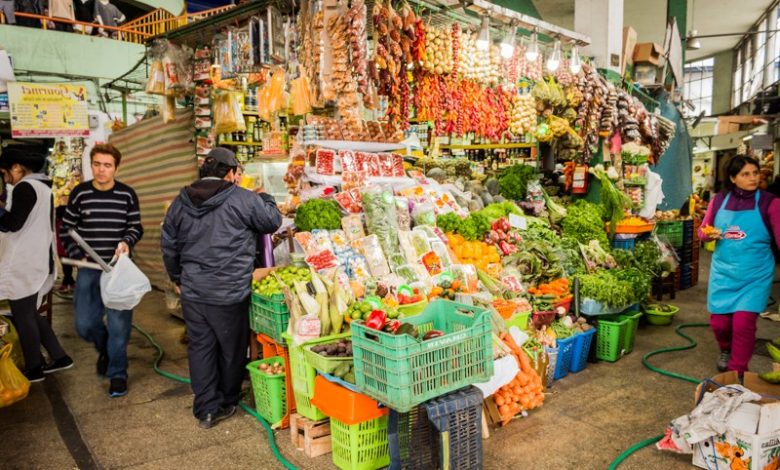
Though you see gleaming supermarkets in Lima’s neighborhoods, its traditional markets continue to be important and are claiming new successes. Traditionally rustic places, where you would find all the necessities for making your daily meals, the neighborhood markets are exceeding all expectations these days with their growth and importance.
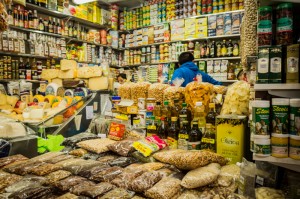
From ancient times, markets have been where people went to fill their cupboards with food and drink. You could even find clothes and household goods there. They were generally the most important place of a neighborhood where people commonly went. In the market you could find everything.
The first markets of Lima were found in its downtown, its center, in front of the Cathedral. Every day there was commerce and people would come from the entire surrounding area to buy in its stalls. But a problem also grew. People would come to get their supplies, but they also attracted thieves and problems of hygiene were created. But even so commerce never slowed down. People just made adjustments. They moved the markets out of the city’s center for the comfort of the residents of the city and in order to improve its image.
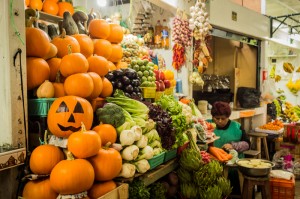
As recently as the 90s most families went to the markets to shop. Because of the massive immigration of people from Peru’s provinces to the city of Lima the urban population exploded and suffered. As the downtown became a series of slums begging for urban renewal, the people forced to live there, along with recent immigrants, began seeking land on the edge of the city where they could put together a humble residence. Because of this the cones, the south and north edges of the city expanded wildly. The only places people could find food to cook was in the markets.
They would seek inexpensive ingredient so that with 5 soles (around two dollars) they could make an entire pot of soup to feed their family. For this they could use chicken feet and vegetables. This need created a small, local industry among locals to help each other in order to survive. The times were hard especially in a class-conscious city such as Lima where often the only work was to clean the luxurious homes of the established people.

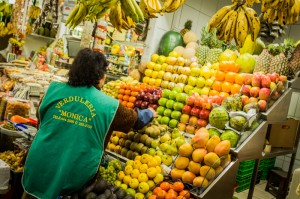
With the passage of years this society separated from the established society of Lima created a new support for the city’s growth and economy. These people provided the labor force and supported the expansion of markets.
Of course during these same years we see the massive growth of supermarkets such as Wong, Plaza Vea, Vivanda and others that sought to provide a different experience for the urban population. They brought order, modernity, and plastic wrapped foods to the population, and relied on industrial production of food and commercial products to stock their shelves. Though the first Wong supermarket opened in 1983, as a transformation of the classic, neighborhood store owned and operated by Chinese immigrants, by now supermarkets have spread widely and created a whole, new series of expectations, as well as provided competition for neighborhood markets.
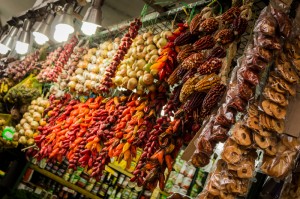
As a result, the traditional markets have also sought to improve order, security, confidence and hygiene as a means of maintaining clients. Lima’s municipal governments have supported or impelled this quest through their regulations and inspections.
Today the neighborhood markets are places where people of all classes come to buy food and other products. Prejudices against them, brought on by the growth of supermarkets, have now dissipated. Anyone who needs the freshest of ingredients and the ability to buy either directly or close to directly from the producer (that is mostly outside the industrial chain of production and distribution) will go to the neighborhood markets to find the ingredients for their dishes.
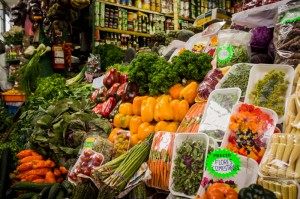
An entire movement in favor of cutting the layers between producer and consumer has developed thanks to the increased focus on gastronomy within Peru, thanks to the efforts of people like Gastón Acurio. His television programs, along with the work of many other Peruvian chefs and culinary school graduates, has brought attention to the value we always had in our markets.
The prices there are often cheaper than those in the supermarkets and the quality of the ingredients for meals is much better. And the quality of produce in the markets keeps improving and becoming more varied.
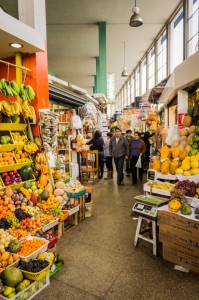
This has helped producers who depended on the markets to distribute their crops and products, often in competition with large agro-industries. They have seen demand for their products rise and they, in turn, have sought to learn much more about business to make their own contacts and contracts with chefs and others to get their goods straight from fields to pots.
Middlemen have seen their role decline since today small, scale farmers can receive training from the government to improve their production and market it effectively.
Wherever we look, we see the effects of this. It has led to an improvement in the quality of foods in households, as well as in Lima’s enormous number of restaurants. When the quality of food and beverages is important, there we will find the traditional markets as a necessary support in getting the freshest of food to us and to our cooks.




